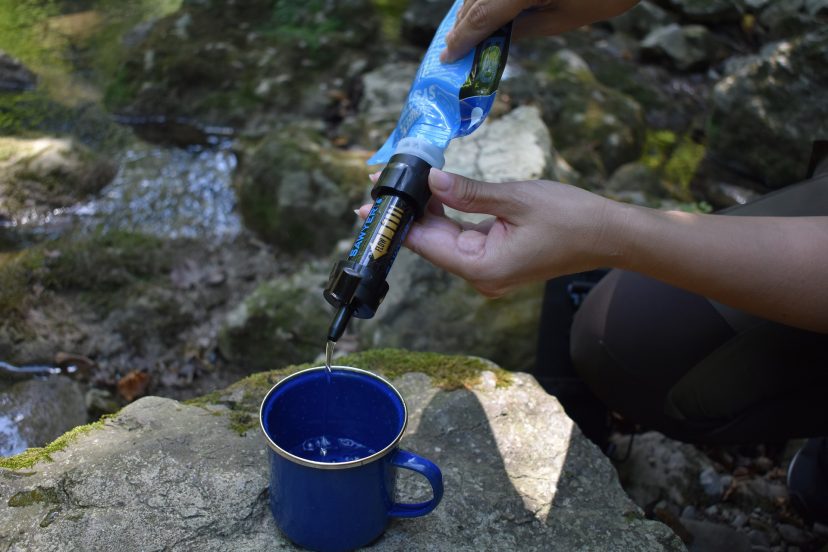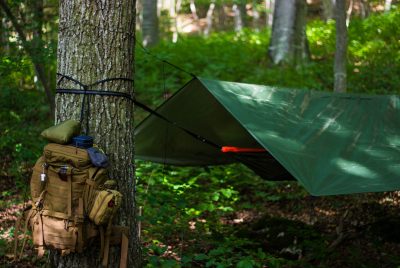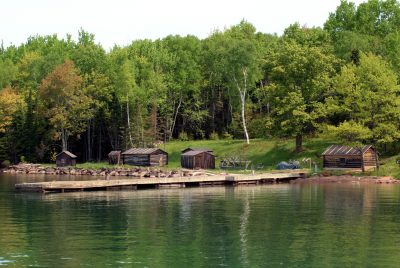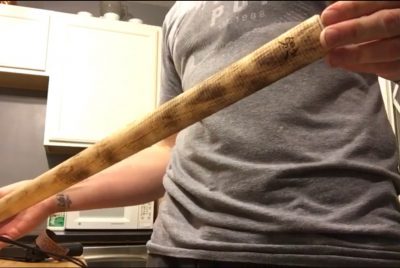The term “bug out bag” may be new to you especially if you have not seen…
How to Treat Water to Make Sure it is Safe to Drink

If you’re in an emergency situation, you’re going to need water. Hopefully, you can find access to a water source, but how are you going to make sure it’s safe to drink? There are several ways to treat water. Water filters are inexpensive and lightweight and can help ensure you always have access to clean drinking water. Read on for a few of the different kinds.
While you can survive without food for several days, the same is not true for water. Without access to water your chances of survival are poor. In an emergency situation you may have to rely on water from a stream or pond, but you will need a way to ensure that it is safe to drink.
The answer is to use a water filter. Fortunately these are not expensive and light enough to add to your survival kit. There are several different types of water filter which are described below.
Pump Filters
Pump filters are a popular method of filtering water. They typically consist of a small unit that goes into the water, connected via a flexible hose to the main filtration unit and pump. Many also have a built-in pre-filter to help get rid of sediment prior to running water through the filter, thus helping to extend its usable life.
Pump type water filters come in various sizes, but all work in the same way. At one end of the pump is a tube that you place into the water. The pump sucks water through a filter which removes the bacteria and other impurities. A second tube allows the filtered water to be discharged into a bottle or other container. Some models also have a pre-filter to remove sediment before the main filtering process takes place.
To use a pump filter, place the submersible end of the filter in the water and the other end inside the bottle or reservoir you want to fill. Then, start pumping. Some pumps are easier to operate than others, so your experience may vary here. Pump until you have filled up your water receptacle, then seal the water up. Remove the submersible end of the filter from the water, and allow the individual filter elements to dry out before packing it back up. Pumps are a great option for water filter because they can siphon water from shallow sources.
One advantage of a pump filter to treat water is that it is able to collect water from a shallow pool, even a puddle although that is not advised. Ideally you should look for clear, cold, flowing water from a stream. Using a pump filter is simply a case of placing the inlet tube into the water source and the outlet into your water bottle. Then pump until you have sufficient for your needs. Some models are easier to use than others so you should check the reviews from previous purchasers to guide your choice. It is important to keep the filter clean and dry after use to avoid any problems.
Chemicals That Treat Water
Chemicals are another easy way to treat water. In fact, they take the least amount of effort overall. Simply fill up a water bottle or reservoir, insert a tablet or two, and wait. The waiting is the hardest part, however– depending on the size of your receptacle and the type of water used, this could take anywhere from 30 minutes to four hours or more.
There are several chemical products that can be used to treat water. They are easy to use since all you have to do is fill up your water bottle and add either drops or pills. The only problem is that you then have to wait for the chemicals to take effect. The waiting time can be as little as 30 minutes, but depending on the size of your water bottle or other container it can be as much as four hours. The waiting time also depends on the product. The most effective is the Chlorine Dioxide Chemical Treatment and, needless to say, this method requires the full four hour wait.
Chemicals are an easy method of water purification, however, they are not particularly useful in situations where you need water quickly. These are best used as a back up to another method of filtering.
Although chemical treatments are both efficient and simple to use, they will not be practical when you need clean water in a hurry. However you would be advised to keep some in your survival kit as a sensible backup to other methods.
Gravity Filters
Gravity filters are an efficient way of filtering water– you literally let gravity do its job and it filters the water for you. These filters consist of a water reservoir on either end, connected by a hose with a filter usually in the middle or at the base of one of the reservoirs.
The convenience of a gravity filter is hard to beat, especially for large groups. You are able treat as much as four liters of water at a time with little effort. The system consists of two containers joined by a tube with a filter in between. The containers have to be hung from a branch of a tree and the one filled with dirty water will flow down the tube through the filter and produce clean water in the second.
To use a gravity filter, all you need to do is find a body of water big enough to fill your reservoir in. A puddle won’t work, but any lake or stream will. Fill the reservoir using a sweeping motion underwater, and then seal it up. You’ll need to find a tree branch or somewhere else that you can secure the water reservoir. As the water drains from the top reservoir to the bottom reservoir, the water will have to pass through the water filter. The process can take around 30 minutes, but it’s relatively effort free.
Once the first container has been filled, you just have to wait for the water to drain into the second without further effort on your part. This is the difference between a gravity filter and a pump filter which requires you to keep pumping until you have the volume of water you want. In addition the gravity filter tends to be heavier than other types which will be a consideration if you are traveling on your own.
Bottle Filters to Treat Water
Bottle filters are extremely fast and easy to use. They consist of a water bottle, and a lid. Connected to the inside of the lid is a water filter. Fill the bottle with water from any source, and it will pass through the filter as you drink. These can be heavier and you can’t gather as much water as you an with other types of filters, but these are great for a quick drink.
These are perhaps the simplest form of water filters in that they are just a bottle with a filter in the top. All you have to do is fill the bottle with water, attach the top and you can immediately drink clean water from the filter. This type is useful if you just want a quick drink, but they tend to be heavier than other filters. In addition they have limited capacity and the filter has to be replaced more often than with other types.
UV Light Purifier
This is a battery powered product which can treat 1 liter of water in about 90 seconds. It is both lightweight, convenient and fast. To use the UV Light Purifier you fill your jug with water, place the tool in the water , gently agitate for 90 seconds and your liter of water is safe to drink. This is about the fastest and easiest water treatment method you can find. The only drawbacks are that it is expensive and will not work with murky water.
Boiling to Treat Water
Boiling is an old school method of water filtration that just works. All you do is take water from any source and boil it for one minute. The advantages of boiling are that it’s easy to do and it doesn’t take long. The drawbacks are that you probably don’t want to drink boiling hot water, so you need to give it time to cool down.
This is perhaps the most basic method of water treatment, but it is very effective. You have to boil the water for one minute or three minutes if you are in an area that is over 6500 feet. Obviously you have to use a fire or camping stove to boil the water and then wait for it to cool before use. Still it is useful to be able to rely on this method if other filters fail.
Wrap Up
There are many ways to filter water. Learning more about each method can help you decide which way is right for you.
As you see from the above there are many different ways of treating water to make sure that it is safe to drink. You will have to balance cost with convenience and decide which one will suit your requirements.



